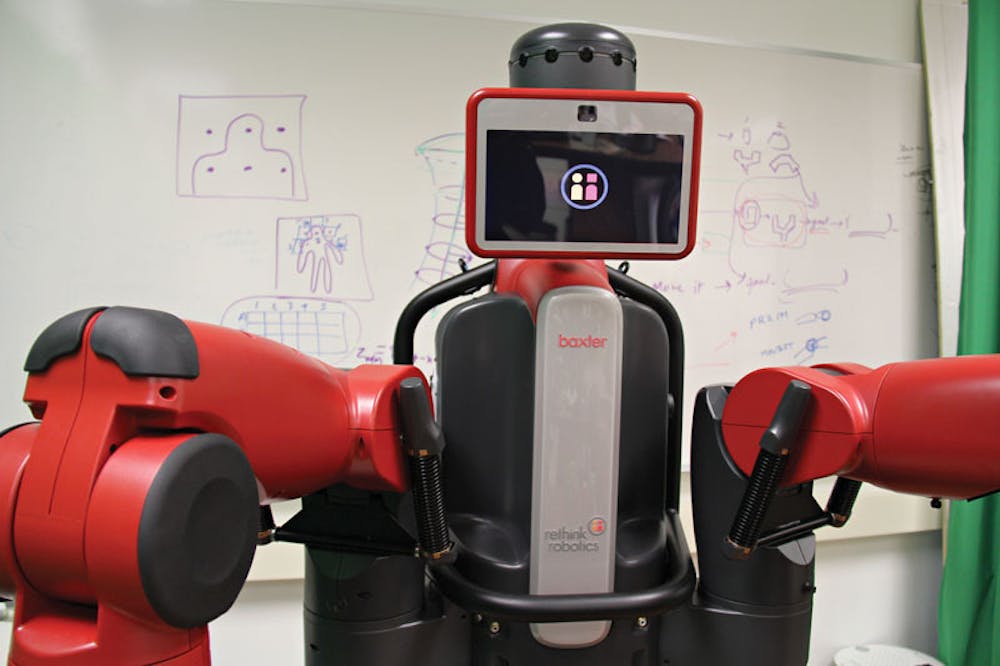By Thanksgiving of 2014, students in the computer science department may be preparing traditional desserts alongside Baxter, a new two-armed robot the department acquired Nov. 5 that may be able to assist with pie-baking.
Assistant Professor of Computer Science Stefanie Tellex and Associate Professor of Computer Science Chad Jenkins decided to purchase the robot with $30,000 from the University’s research fund, Tellex said.
Tellex said the new robot, Baxter, is more flexible than PR2, a robot the computer science department purchased in 2011. It is equipped with movable joints resembling those of humans, making it suitable for tasks such as cutting and assembling. The design makes the robot “really safe to be around humans,” Tellex said.
A Boston-based company, Rethink Robotics, created the Baxter robot for industrial use in small factories, Tellex said, adding that “it may bring outsourced jobs back to the country.”
Stephen Brawner GS, a PhD student working with the robot said the large-scale production of Baxter for factories has significantly lowered its price — Baxter costs 20 times less than its predecessor, PR2.
The robot is equipped with 3-D cameras and video cameras that enable it to see a room’s environment. The images it collects are then processed on an external computer which provides the computational power to analyze the data, Brawner said.
University researchers are currently testing different programs on the robot, including one enabling it to give people hugs. They ultimately hope to program the robot to assist with household tasks like food preparation and diaper changing, Tellex said.
Brawner and another PhD student, Nakul Gopalan GS, are using Baxter to research robotic learning.
“We teach robots to do things,” Brawner said. “The more a robot can do, the more useful it will be for the society.”
Brawner is focusing on configuring the robot to cook and bake, which includes helping teach the robot to respond to natural language with questions for clarification or suggestions.
“If you ask the robot for apples, flour, sugar and a baking dish, it should ask if you are making an apple pie. And if you say so, it should automatically bring you a rolling pin for preparing the crust,” Tellex said, adding that one of the goals of the research is to teach the robot to “infer recipes.”
Gopalan researches how the robot can aid childcare, with a current focus on developing programs that will enable the the robot to help change babies’ diapers.
Brawner and Gopalan are still developing the mathematical programs that drive the robot.
“Getting a robot to perform tasks reliably requires more effort than (one) would think initially,” Brawner said.
He and Gopalan expect to begin testing their complex programs on the robot over winter break.
Tellex said she hopes the group will be able to publish research results in six months.
Her goal is to make robots that are “useful to people,” she said. “In 20 years, there will be a robot in every home.”

ADVERTISEMENT




